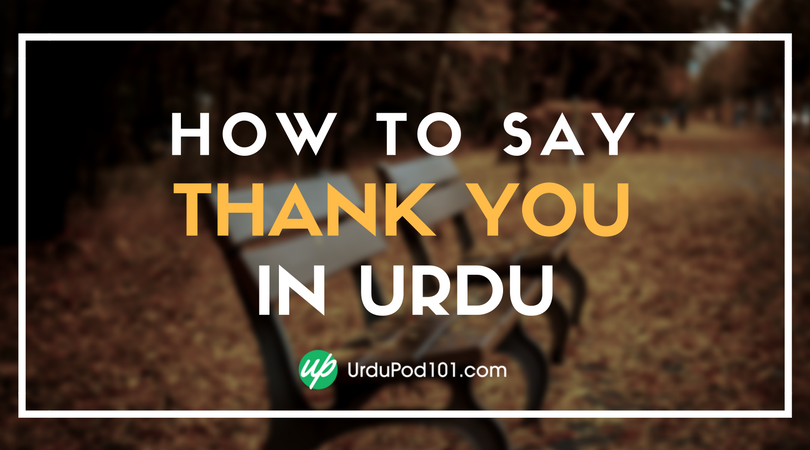
“If you board the wrong train, it is no use running along the corridor in the other direction.”
To board the right train and to save the trouble of running in the other direction, you must know how to ask and give directions in Urdu while living or traveling across the Urdu-speaking lands. Nevertheless, the process of learning Urdu directions will require some effort on your part. Here, we’ll introduce you to a few key words, phrases, and sentences to help empower you as you learn Urdu directions.

Table of Contents
- Why is it Important to Study Giving and Asking for Directions?
- Learning the Four Cardinal Directions in Urdu
- The Intercardinal Directions in Urdu
- How to Read a Map in Urdu
- Indispensable Directional and Positional Words
- Some Useful Expressions for Discussing the Road Map
- How to Use Landmarks for Directional Purposes
- Some Phrases You Must Know for Asking and Giving Directions in Urdu
- Conclusion
1. Why is it Important to Study Giving and Asking for Directions?
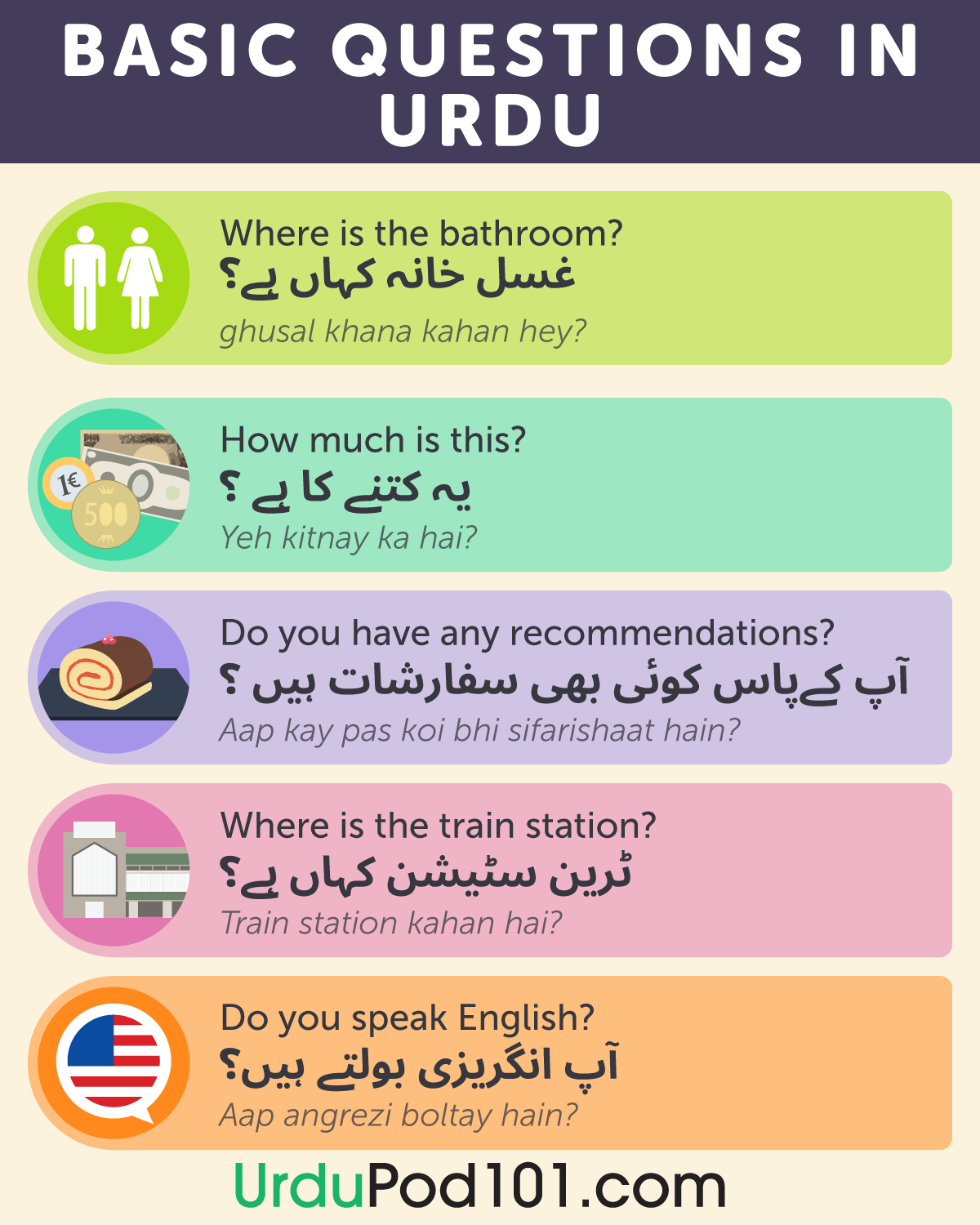
Directions guide you on how to travel or even transport something from one place to another. Don’t undermine the importance of learning the proper use of direction in the Urdu language.
It could be the reason you’re able to lead and succeed in Pakistan or any other Urdu-speaking country. When roaming about the streets of such a country, asking or giving directions in Urdu could be the most significant thing you do.
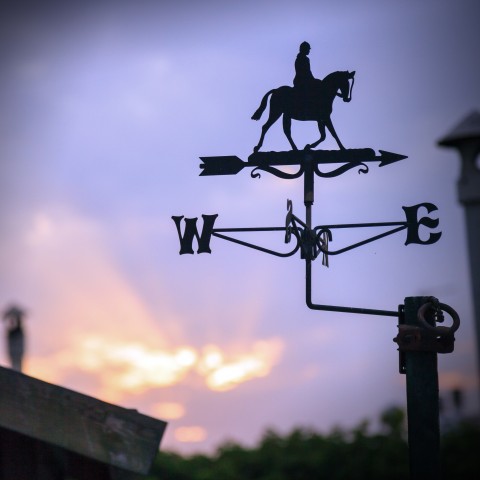
2. Learning the Four Cardinal Directions in Urdu
If you’re looking for the equivalents of the cardinal directions in Urdu, you’re in the right place. It’s the best place to begin because it will also help you read the map in Urdu.
مشرق (mashriq) — East
Let’s start with the east direction in Urdu. This first cardinal direction, east, is translated as مشرق (mashriq) in Urdu. Whenever you need to consult a map or ask/tell someone directions in Urdu, you may come across this word frequently.
Let’s say someone is giving you directions to their house. They may say:
- میرا گھر آپ کے ہوٹل کے مشرق میں واقع ہے۔
mera ghar aap kay hotel kay mashriq mein waqia hai.
My house is situated to the east of your hotel.
To get a detailed guideline on how to check-in at a hotel in Urdu, please consult the highlighted hyperlink.
مغرب (maghrib) — West
Now for west in Urdu. The second cardinal direction, west, is translated as مغرب (‘maghrib’) in Urdu. As another cardinal direction, it’s used frequently in day-to-day language.
Below is a sentence which may help you understand how to use the word “west” in Urdu properly.
- سورج مغرب میں غروب ہوتا ہے.
suraj maghrib mein gharoob hota hai.
The sun sets in the west.
شمال (shumal) — North
North in Urdu is the third cardinal direction we’ll cover. شمال (‘shumal’) is the exact translation of this direction in Urdu.
Here’s an example of how you can use it in a sentence:
- کیا آپ اس وقت کھیل کے میدان کے شمال میں کھڑے ہیں؟
kia aap is waqt khel kay maidan kay shumal mein kharay hain?
Are you standing in the north of the playground?
جنوب (junoob) — South
South is the fourth cardinal direction we’ll cover; it can literally be translated as جنوب (‘junoob’) in Urdu.
Below is a sentence using south in Urdu.
- میرا گھر آپ کے ہوٹل کے جنوب میں واقع ہے۔
mera ghar aap kay hotel kay junoob mein waqia hai.
My house is situated to the south of your hotel.
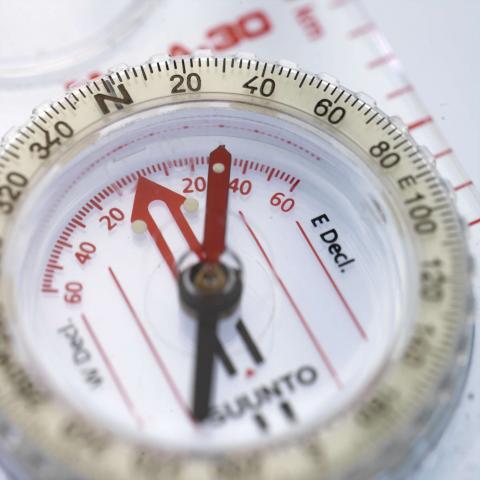
3. The Intercardinal Directions in Urdu

Besides the four cardinal directions, there are also intercardinal directions. These remaining compass directions in Urdu are also known as ordinal or intermediate directions. Knowing these is a big plus if you intend to learn directions in Urdu for the sake of applying them in your everyday life. Find below a list of four intercardinal directions in Urdu. Once you’ve learned these, be sure to use them when asking or giving directions in Urdu.
- شمال مشرق (shumal mashriq) — Northeast
- جنوب مشرق (junoob mashriq) — Southeast
- جنوب مغرب (junoob maghrib) — Southwest
- شمال مغرب (shumal maghrib) — Northwest
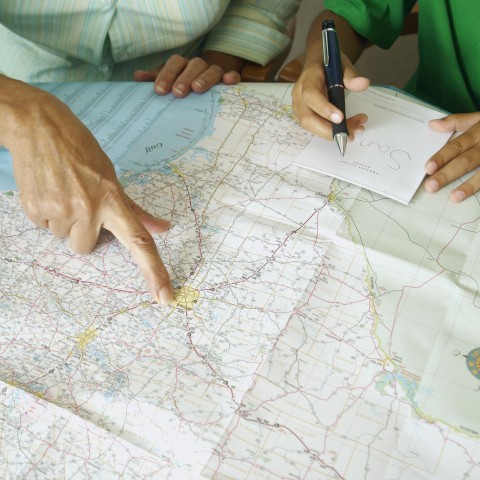
4. How to Read a Map in Urdu
Giving or asking for directions in Urdu on the street is quite different from using a map in Urdu. However, after learning cardinal and intercardinal directions in Urdu, you’re well-prepared to read a map in Urdu. The above-mentioned Urdu words and phrases equip you with the rudimentary list of directions you need to use the map effectively.
Following are a few simple sentences that will help you understand the complicated process of map-reading in Urdu.
لاہور ہاکستان کے شمال مغرب میں واقع ہے۔
Lahore Pakistan kay shumal maghrib mein waqia hai.
Lahore is situated to the northwest of Pakistan.
چین پاکستان کے شمال مشرق میں واقع ہے۔
Cheen Pakistan kay shumal mashriq mein waqia hai.
China is located to the northeast of Pakistan.
سنگا پور جنوب مشرقی ایشیائی ممالک میں سے ایک ہے۔
singapore junoob mashriqi aishiayi mumalik mein say aik hai.
Singapore is one of the southeastern Asian countries.
جنوب مغربی ایشیاء میں پندرہ ممالک شامل ہیں۔
junoob maghribi asia mein pandrah mumalik shamil hain.
Southwest Asia includes fifteen countries.
5. Indispensable Directional and Positional Words
Direction tells you where to go, and position identifies where something is. As an Urdu learner, you’ll find that these two concepts complement each other while learning directions in Urdu. By knowing words and phrases of each category, you’ll be able to give and ask directions in Urdu and tell people where something is located. Let’s start discussing a helpful list of such words below.
The following words and sentences will introduce you to the usage of directional and positional vocabulary.
اوپر (opar) — Above
میں نے اپنے ہاتھ کندھوں سے اوپر اٹھائے۔
mei nay apnay hath kandhon say opar uthaye.
I raised my hands above my shoulders.
نیچے (neechay) — Below
وہ میرے فلیٹ کے نیچے کھڑا تھا۔
woh meray flat kay neechay khara tha.
He stood below my flat.
دائیں (daein) — Right
اس نے اپنی دائیں طرف دریا دیکھا۔
uss nay apni daein taraf darya daikha.
He looked to his right side.
بائیں (baein) — Left
بائیں طرف مڑیں اور دوڑنا شروع کر دیں۔
baein taraf murein aur dorna shuru ker dein.
Turn to the left and start running.
سامنے (samnay) — Front
وہ میرے سامنے بیٹھی ہے۔
woh meray samnay baithi hai.
She is sitting in front of me.
پیچھے (peechay) — Back
اس نے سینما کے پیچھے میرا انتظار کیا۔
us nay cinema kay peechay mera intizar kia.
He waited for me in the back of the cinema.
کونا (kona) — Corner
اس کی دوکان گلی کےکونے پر ہے۔
us ki dokan gali kay konay per hai.
His shop lies at the corner of the street.

6. Some Useful Expressions for Discussing the Road Map
As an efficient Urdu learner, giving directions in Urdu to someone is a test of your Urdu language skills. Mastering some commonly used phrases like not only makes you more confident, but also places you at a great vantage point. Let’s use these words and phrases in full sentences now.
میں سڑک کے پار ہوں۔
mei sarak kay par hun.
I am across the road.
میں چوک پر ہوں۔
mei chowk per hun.
I am on the square.
آپ کے ساتھ کون کھڑا ہے؟
aap kay sath kon khara hai?
Who is sitting beside you?
سیدھے چلتے جائیں پھر بائیں مڑیں۔
seedhay chaltay jain phir baein murein.
Keep going straight then turn left.
سیڑھیاں اتر کر دائیں مڑیں۔
seerhian utar kar daein murein.
Go downstairs and turn right.
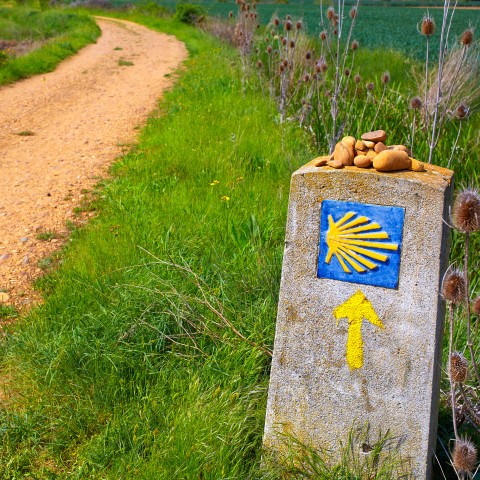
7. How to Use Landmarks for Directional Purposes
If you want to know the exact translation of the word “where” in Urdu, it’s کہاں (kahan). You may come across a common question widely used by the Urdu-speaking community: آپ کہاں ہو؟ . See the translation of this question below and use it as often as you can to improve your Urdu skills.
آپ کہاں ہو؟
aap kahan ho?
Where are you?
Here are a couple possible answers to the question:
میں شہر میں ہوں۔
mei shehar mein hun.
I am in the city.
میں سڑک پر چل رہاہوں۔
mei sarak par chal raha hun.
I am walking on the road.
8. Some Phrases You Must Know for Asking and Giving Directions in Urdu

So far, we’ve introduced you to several words and phrases for asking and giving directions in Urdu. To proceed further, we would like to acquaint you with some ways to get a person’s attention and courteous phrases to end the conversation with once you’ve gotten directions.
1- Beginning the Conversation
Here’s one common sentence in Urdu to get someone’s attention so you can ask for directions in Urdu.
معاف کیجئے گا، کیا میں پوچھ سکتا ہوں کہ۔۔۔
maaf kijiye ga, kia mei pooch sakta hun ky…
Excuse me, may I ask that…
Now you may add any question you want to ask. An example question is given below.
یہاں سے ریلوے سٹیشن کتنی دور ہے؟
yahan say railway station kitni dur hai?
How far is the railway station from here?
2- Courteous Close
It’s always desirable to conclude your conversation with courtesy. Here’s a common way to politely end the conversation:
آپ کی مدد کا شکریہ
aap ki madad ka shukria.
Thank you for your help.
https://wordlist.languagepod101.com/wordlist/media/25761&v=medium.jpg (person facing empty chairs)
9. Conclusion
Being directionless in a strange land could be a nightmare for anyone. However, you need not worry, for UrduPod101.com has prepared a series of articles and lectures to help you avoid any such untoward situation in real life. Don’t forget to consult this rich source of information while learning the Urdu language. After enough practice and diligence, you’ll be able to confidently visit any Urdu-speaking country.
Are you well-prepared to find your way around using the above-given directional words, phrases, and sentences? Feel free to give us your feedback as it will help us improve by addressing your concerns about learning the Urdu language, without compromising the fun factor.
Very Happy Urdu Learning!



